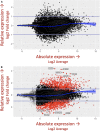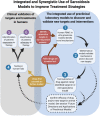Current Sarcoidosis Models and the Importance of Focusing on the Granuloma
- PMID: 32849608
- PMCID: PMC7417311
- DOI: 10.3389/fimmu.2020.01719
Current Sarcoidosis Models and the Importance of Focusing on the Granuloma
Abstract
The inability to effectively model sarcoidosis in the laboratory or in animals continues to hinder the discovery and translation of new, targeted treatments. The granuloma is the signature pathological hallmark of sarcoidosis, yet there are significant knowledge gaps that exist with regard to how granulomas form. Significant progress toward improved therapeutic and prognostic strategies in sarcoidosis hinges on tractable experimental models that recapitulate the process of granuloma formation in sarcoidosis and allow for mechanistic insights into the molecular events involved. Through its inherent representation of the complex genetics underpinning immune cell dysregulation in sarcoidosis, a recently developed in vitro human granuloma model holds promise in providing detailed mechanistic insight into sarcoidosis-specific disease regulating pathways at play during early stages of granuloma formation. The purpose of this review is to critically evaluate current sarcoidosis models and assess their potential to progress the field toward the goal of improved therapies in this disease. We conclude with the potential integrated use of preclinical models to accelerate progress toward identifying and testing new drugs and drug combinations that can be rapidly brought to clinical trials.
Keywords: granuloma; lung; macrophages; modeling; sarcoidosis.
Copyright © 2020 Locke, Schlesinger and Crouser.
Figures








References
Publication types
MeSH terms
Grants and funding
LinkOut - more resources
Full Text Sources

